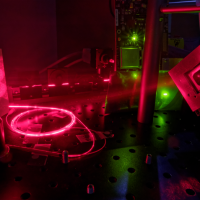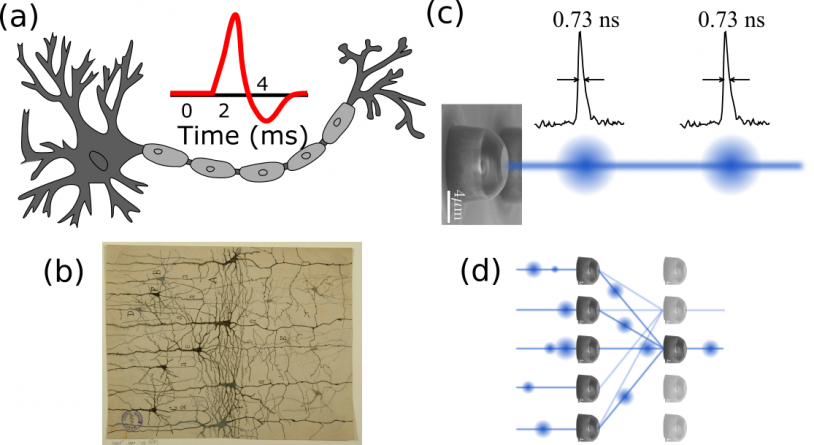The ANAONDA objectives:
I: A scalable spiking photonic neural network
ANACONDA aims at developing large-scale and ultrafast photonic neuromorphic hardware based on spiking artificial neurons. We plan to leverage photonic recurrent SNNs to design a reservoir computer (RC) [4] with spiking nodes (photonic Liquid State Machine), and ultra-fast photonic spike processing. The use of photonic neuromorphic systems is motivated by potential parallelism and ultra-high speed: excitable optical neurons have demonstrated spike durations on the order of a few hundred picoseconds and multi-GHz spike rates. This is approximately 3 and 6 orders of magnitude faster than their electronic or biological counterparts, respectively. Finally, light propagation during inter-neuron communication consumes little energy due to the small absorption and cross-talk between photonic signal channels. Photonic neuromorphic hardware is therefore potentially highly energy efficient.
(II): Advanced learning methods for spiking photonic networks
Advanced learning tools based on binary-connections and spiking networks have emerged in the recent past. Based on spike-time dependent plasticity (STDP), a biologically plausible learning rule for SNNs, layers of spiking neurons are capable to identify repetitive features. Combined with reinforcement learning, reward-modulated STDP is capable to optimize a complex network for specific tasks, achieving excellent performance. Such binary networks can efficiently be mapped onto photonic hardware.


